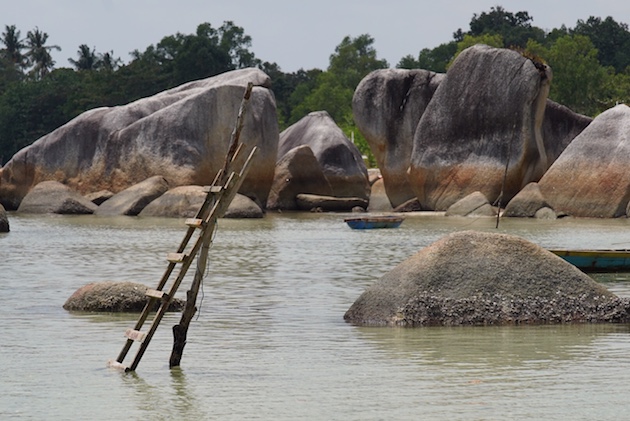50 science researchers from around the world are meeting on Belitung Island in Indonesia from August 25 to 30, 2019 to review progress in knowledge of the El Niño phenomenon that periodically affects people in South America, Asia and Australia.
What is El Niño?
It is a large-scale climatic phenomenon that is taking birth in the equatorial Pacific. It is associated with changes in water temperature, significant meteorological changes: winds and precipitation. They occur irregularly every 2 to 7 years and last from 6 to 18 months.
At the origin of the name, Peruvian fishermen were able to observe a warming of the water around Christmas and named this observation El Niño, in reference to the birth of Jesus.
In "normal" conditions, except El Niño (and La Niña), the trade winds, regular winds, blow from east to west, carry warm surface waters westward (from South America to Oceania). This state is associated with upwelling from deeper, colder waters along the coasts of Peru, which are sources of nutrients to surface waters and therefore favour fishing activities. During El Niño events, the arrival of warm water in this area has an impact on rainfall patterns and results in devastating rainfall. In contrast, during a La Niña year, surface waters are colder than normal and this condition is associated with abnormally dry conditions in South America.
What are the consequences?
During El Niño, there is an increase in the frequency of storms and hurricanes in French Polynesia and an increase in rainfall on the Peruvian coast causing flooding. In addition, as surface waters are particularly warm on the South American coasts, this creates a decrease in fish populations.
In the west, dry conditions are developing over Indonesia and Australia. This situation causes droughts and has significant impacts on rice crops, for example.
The most significant impact of this climate phenomenon is that it is accompanied by global temperature variations: the warmest years recorded in recent decades are El Niño years.
How to measure to understand?
The scientists present at this workshop study El Niño, each with their own speciality, their own research axis. It is now difficult to have a global vision of this large-scale phenomenon. All work from climate archives that allow us to establish data on the past, and in particular on the geological period of the Holocene (the last 10,000 years). Corals, foraminifera found in sediments (fossil plankton) or tree rings can reveal valuable information about past variations in El Niño and, therefore, provide a better understanding of the present and future.
Belitung from 25 to 30 August 2019 - Objectives
50 researchers are meeting in Indonesia, one of the countries particularly affected by the El Niño phenomenon. Belitung Island is one of the research areas of these climate archives through the presence of ancient corals. The choice to organize this workshop in this region also has the advantage of allowing scientific teams from the region (Indonesia, Thailand, Malaysia) to participate.
In the 1990s, when there was a suspected increase in intensity and frequency, scientists wondered if there might be a link with the current climate disruption.
The objective of this week will be to share all the accumulated data and analyses in order to further develop understanding and better predict El Niño episodes in order to better prepare for them.
Two organizers
Two women are at the origin of this workshop:
Mary Elliott (LPG Nantes - France)
Sri Yudawati Cahyarini (LIPI Indonesia).
On-site assistance:
Go Belitung - http://www.gobelitung.com
Photos/Web writing + social networks :
"Mesurer la taille du Monde*" Program - (CEARC - Le Grain - Marine Sciences For Society) - http://mesurerlatailledumonde.org
To follow:
https://www.instagram.com/paleo.enso
https://twitter.com/EnsoPaleo (see below)
Associates :
PAGES - Past Global Changes - http://pastglobalchanges.org
LPG - https://lpg-umr6112.fr
LIPI - http://lipi.go.id
Institut Français d'Indonésie - https://www.ifi-id.com
(*) measure the size of the world program

